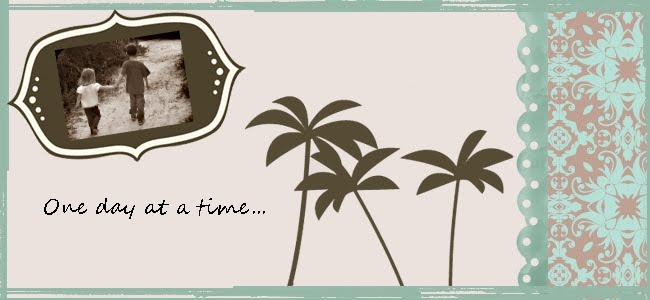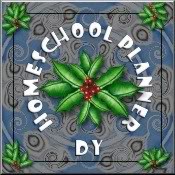
"Out-of-Door Life.––The consideration of out-of-door life, in developing a method of education, comes second in order; because my object is to show that the chief function of the child––his business in the world during the first six or seven years of his life––is to find out all he can, about whatever comes under his notice, by means of his five senses; that he has an insatiable appetite for knowledge got in this way; and that, therefore, the endeavour of his parents should be to put him in the way of making acquaintance freely with Nature and natural objects; that, in fact, the intellectual education of the young child should lie in the free exercise of perceptive power, because the first stages of mental effort are marked by the extreme activity of this power; and the wisdom of the educator is to follow the lead of Nature in the evolution of the complete human being." Home Education pg. 97-98
That pretty much sums up our preschool program. Everything covered in a typical preschool curriculum can be covered in such a natural way. I usually print this out and take a look at it every few months. There are very few items that I need to plan to cover during these years -most learning just happens informally during our day. No need for lesson plans, flashcards, or workbooks.
A typical day with Charlotte our current preschooler.....

Inside play- Lots of it! Playing house, cooking, blocks, building, trains, etc.....
"But even at this stage the habit of attention may be trained: the discarded plaything is picked up, and, with 'Pretty!' and dumb show, the mother keeps the infant's eyes fixed for fully a couple of minutes––and this is her first lesson in attention." Home Education pg. 140-141
Outside time- Lots of it!
Running, jumping, swinging, sliding, climbing, playing hide and go seek, tag, etc......
"For we are an overwrought generation, running to nerves as a cabbage runs to seed; and every hour spent in the open is a clear gain, tending to the increase of brain power and bodily vigour, and to the lengthening of life itself. "
Home Education pg. 43

Our preferred method of learning colors, shapes and counting. This year the game is talking about her finds. Next year, I'll send her on a scavenger hunt looking for a specific color, shape, size or location.
"Who can see the most, and tell the most, about yonder hillock or brook, hedge, or copse. This is an exercise that delights children, and may be endlessly varied, carried on in the spirit of a game, and yet with the exactness and carefulness of a lesson. "Home Education pg. 46-47
A daily story that all will find interesting.
"On the whole, the children who grow up amongst their elders and are not provided with what are called children's books at all, fare the better on what they are able to glean for themselves from the literature of grown-up people. "
Home Education pg. 176

A little adventure during a nature walk.
"Some children are born naturalists, with a bent inherited, perhaps, from an unknown ancestor; but every child has a natural interest in the living things about him which it is the business of his parents to encourage; for, but few children are equal to holding their own in the face of public opinion; and if they see that the things which interest them are indifferent or disgusting to you, their pleasure in them vanishes, and that chapter in the book of Nature is closed to them." Home Education pg. 59
Table time-only if you must.
Children with older siblings will naturally want to join during their lessons and want a little work of their own. I did plan a little....a very little..... project and such at this very table for my firstborn. Little tables are quite handy for playdoh and tea parties and she will have her first real school lessons at this table in a few years.....
"[A mother] must ask herself seriously, Why must the children learn at all? What should they learn? And, How should they learn it? If she take the trouble to find a definite and thoughtful answer to each of these three queries, she will be in a position to direct her children's studies; and will, at the same time, be surprised to find that three-fourths of the time and labour ordinarily spent by the child at his lessons is lost time and wasted energy." Home Education pg. 172
 Pick up time!
Pick up time!
Now is the time to really start working on the habits that will make the future years of school proceed cheerfully.
"The mother who takes pains to endow her children with good habits secures for herself smooth and easy days; while she who lets their habits take care of themselves has a weary life of endless friction with the children. "Home Education pg. 137
 We did not have a Green Hour we had a Green Week! We have inspected, dissected, poked, prodded, virtually every wildflower, tree, insect, and bird in our backyard. Big Sis' joined in much of the adventure and has been crowned "Butterfly Catcher Extraordinaire"! In an attempt to try to keep our focus on our trees we have started playing games with our trees. "Race you to the ( name , characteristic, etc)" is a favorite with Sam.
We did not have a Green Hour we had a Green Week! We have inspected, dissected, poked, prodded, virtually every wildflower, tree, insect, and bird in our backyard. Big Sis' joined in much of the adventure and has been crowned "Butterfly Catcher Extraordinaire"! In an attempt to try to keep our focus on our trees we have started playing games with our trees. "Race you to the ( name , characteristic, etc)" is a favorite with Sam.




 Charlotte made her first pine cone bird feeder. I planned on doing this to help get Sam out of the house because this has always been one of his favorite activities. He got really tickled watching his sister make such a mess. He gave her pointers and directions from his "supervisor's" seat on the swing. " Too much peanut butter." " Charlotte,stop eating it!"
Charlotte made her first pine cone bird feeder. I planned on doing this to help get Sam out of the house because this has always been one of his favorite activities. He got really tickled watching his sister make such a mess. He gave her pointers and directions from his "supervisor's" seat on the swing. " Too much peanut butter." " Charlotte,stop eating it!"
















 A few of the specimens that I'm not sure of their names but will try to follow throughout the year.
A few of the specimens that I'm not sure of their names but will try to follow throughout the year. 




 "(e) That the child, though under supervision, should be left much to himself––both that he may go to work in his own way on the ideas that he receives, and also that he may be the more open to natural influences. "
"(e) That the child, though under supervision, should be left much to himself––both that he may go to work in his own way on the ideas that he receives, and also that he may be the more open to natural influences. "












